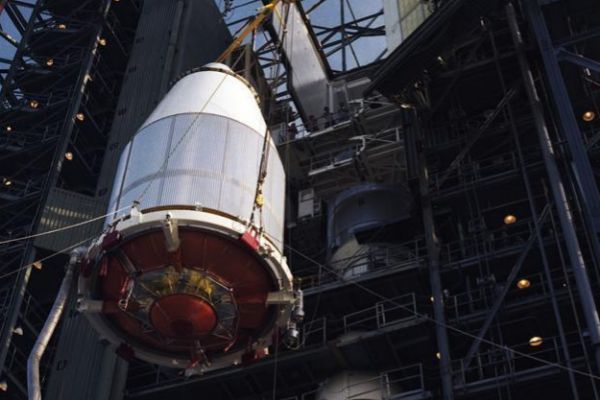- Deep Space Network: 'Spanish NASA' targets Mars
- Voyager.Travel to the infinite
The most traveling ships in history continue to give NASA joy and honor its name. Launched in 1977 with a few weeks apart to explore the planets of the outer Solar System, the Voyager 1 and Voyager 2 twins have far exceeded the most optimistic expectations of engineers and not only continue flying, but have already left the theoretical frontier of the Solar System .
While Voyager 1 entered interstellar space on August 25, 2012 -the confirmation was made the following year-, this Monday five different studies ensure that Voyager 2 got it on November 5, 2018 and describe what that border region looks like of the Solar System in which the so-called interstellar space begins. Currently, Voyager 2 is more than 18,000 million kilometers from Earth. It is such a great distance that your data reaches almost 19 hours to reach our planet.
As the scientists from the University of Iowa explain that they sign one of the five studies published in the journal Nature Astronomy , it was just a year ago when the instrument that Voyager 2 carries to measure plasma detected a sharp change in the density of this one: from the hot and low-density plasma characteristic of the regions dominated by the solar wind to the cold and higher-density plasma that is believed to be in the interstellar medium.
Borders formed by fluids
The solar wind is the stream of ionized particles or plasma that comes out of the solar corona and the magnetic field. The heliosphere - inner region of the Milky Way where the planets of the Solar System are located - is dominated by the solar wind and under the influence of that magnetic field.
"The old idea that the solar wind gradually decreases as it enters interstellar space is simply not true," says Don Gurnett, a scientist at the University of Iowa and co-author of one of the studies published today.
"We have shown with Voyager 2 - and previously with Voyager 1 - that there is a distinctive border. It is surprising how fluids, including plasmas, form borders," says Gurnett, lead scientist of the plasma probe instrument and author in a statement from the study that in 2013 confirmed that Voyager 1 had entered interstellar space.
The data collected by Voyager 2 also suggests that there are different thicknesses in the heliosphere, according to scientists.
Flight over giant planets
The Voyager 2 probe was launched with the aim of exploring Jupiter, Saturn, Uranus and Neptune. After flying over Jupiter and Saturn, his twin Voyager 1 headed straight for interstellar space, while Voyager 2 made a detour to reach Neptune and Uranus. That is why it has taken six more years to reach interstellar space than Voyager 1 .
While Voyager 2 made its entry into the interstellar region when it was at a distance from the Sun of 119.7 astronomical units or AU (an astronomical unit is the distance between the Earth and the Sun), Voyager 1 l or It was at 122.7 AU from the Sun, that is, a similar distance. This, according to scientists, would imply that the heliosphere is symmetric or at least it is in the two points through which Voyager ships crossed.
Although it is often said that Voyager have left the Solar System, there are astronomers like Rafael Bachiller who disagree with the use of these terms: "Although the ships are leaving the heliosphere and have reached a region of space where similar to interstellar conditions prevail, I do not think it can be said that they have left the Solar System, "says the director of the National Astronomical Observatory (IGN).
As he argues, the Solar System has enormous dimensions and the gravitational action of the Sun is still very important in that region that ships now go through. To reach the inner edge of the Oort cloud, that area where long-term comets abound and which is considered an integral part of the solar system, would still need several centuries ... and several millennia to get out of it! "
Further nuances, Bachiller considers "very interesting to know that both ships, traveling in different directions, reached the border of the heliosphere at the approximate distance of 120 astronomical units, as this gives indications that the heliosphere can be quite symmetrical, perhaps in a way approximately spherical. "
Despite the 42 years they have been traveling through the hostile space, the two probes are in quite good condition although, as Rafael Bachiller recalls, "when it comes to studying the interstellar medium, Voyager 2 is an advantage over your sister because, although in both their plasma wave subsystems (PWS) still work, the first one keeps the plasma spectrometer (PLS) that allows studying the characteristics of the plasma through which it passes, while this instrument ceased to be operational in Voyager 1 ago many years".
How long will they be operational? NASA scientists believe they will be able to send data with their instruments until approximately 2025 although the antennas that monitor them from Earth could continue tracking them for much longer. And even if they stop transmitting, the ships will continue to travel through interstellar space for billions of years because, as Bill Kurth of the University of Iowa points out, the probability that they will encounter something on their way is practically zero. " opinion, the twin probes "will survive Earth."
According to the criteria of The Trust Project
Know more- Science and Health
- science
Biotechnology An army of 162 million sterile flies to fight a plague
AstronomyOrionidas: a shower of stars created by Halley's comet
Strait of Gibraltar Find a very rare giant jellyfish specimen in Ceuta waters

